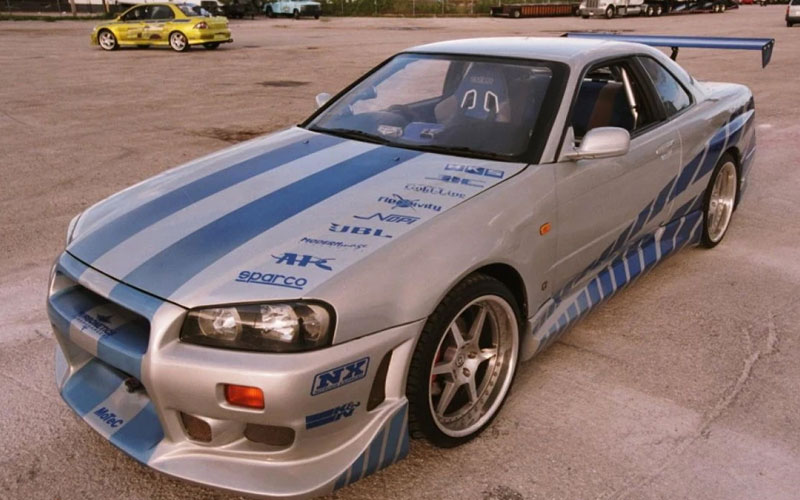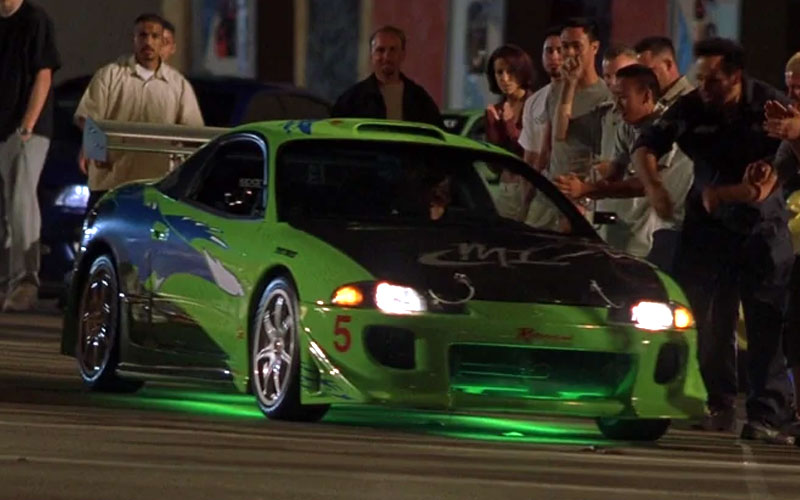Cool Car Find: Fast & Furious Mitsubishi Eclipse
Looking to drive a car straight out of The Fast and the Furious? This Mitsubishi Eclipse on Carsforsale.com might be just what you need.
An Action Franchise Focused on Cars
The Fast and the Furious was an exciting undercover cop movie that focused on the world of street racing and spun itself into a successful movie franchise. This first movie holds a special place in car enthusiasts’ hearts and the vehicles depicted on screen are some of the best in the franchise. You’ve got Dom’s Dodge Charger, Brian’s Toyota Supra, Johnny Tran’s Honda S2000, and a bright green Mitsubishi Eclipse that falls apart trying to out race an RX-7. These cars are commonly replicated by fans in real life, and we’ve found one for sale on Carsforsale.com that’s worth a look to the right buyer. But first let’s understand what went into finding and setting up these cars for the first movie before we take a look at a terrific replica of Brain O’Connor’s Mitsubishi Eclipse.
How We Got This Fast and Furious Car

Craig Lieberman was the Technical Advisor on the first two Fast & Furious movies and helped source a number of the vehicles used in the films. In fact, he’s the original owner of Vince’s Nissan Maxima used in the first movie, Brian’s Toyota Supra also used in the first movie, and Brian’s Nissan Skyline used in 2 Fast 2 Furious. The rest of the Hero Cars for the films were found through casting calls hosted by Lieberman in which he would look for certain desired models and styles that the studios felt would fit their tuner culture focused story.
For instance, the Mitsubishi Eclipse that used as the Hero Car for Brian’s street race was actually way more underpowered than the film makes it out to seem. It was a nicely modified 1996 Mitsubishi Eclipse RS, but under the hood was just for show rather than outright performance. It carried a naturally aspirated 2.0L inline-four engine that had a Hotshot Header exhaust manifold, a ported throttle body, and an Injen cold air filter system tacked on.

Visually, the Mitsubishi Eclipse used by Paul Walker was a great looking build. The body was comprised of a kit produced by Robocar that featured an added custom carbon fiber front splitter and a roof scoop. Carbon fiber can also be seen used for the hood, side mirrors, and the rear spoiler. There were also some 18-inch Axis Se7en One-piece wheels installed wrapped in Toyo tires. Inside there was a custom carbon fiber trimmed dashboard and gauge cluster, Sparco racing seats, Sparco harnesses, Sparco steering wheel, an Alpine CD/DVD player, full Sony audio equipment, and a color matched six-point roll cage.
The Eclipse looked the part already, but the studio wanted these cars to be over the top for the movie and would take some creative liberties. Some of their requests and ideas were a little outside the reality of the culture, but Lieberman was luckily there to set them somewhat straight and keep them closer to reality. The biggest change from the street to the movie set for this car was its paint scheme. The Eclipse was originally silver, but this was replaced by the bright green livery with the blue tear design that fans of the series know today.
The Nitrous Oxide System (NOS) seen at the rear of the vehicle was for show as it’d only be helpful to a turbocharged engine, which the Hero car was not. So, the dual tanks you see in the film aren’t even hooked up and the buttons on the steering wheel did nothing. The random hole in the floor on the passenger side that drops out when the exhaust manifold supposedly fails was added so that the studios could show more action through shooting sparks alongside the tailpipe flames from the NOS hits.
The Fast and the Furious movie utilized six different Mitsubishi Eclipses throughout the film from various years but all from the same generation. The first was the main Hero Car utilized for exterior shots and under the hood shots. Another was used just for interior scenes with Paul Walker. The third was the stunt car that was shot by Johnny Tran and his crew that ended up exploding into the air because of the NOS tanks. The fourth and fifth Mitsubishi Eclipses were other stunt cars that were later repainted and used in 2 Fast 2 Furious. The final car was used for action shots using a gimbal mount from the outside of the vehicle.
This Replica of Brian’s Mitsubishi Eclipse
This 1996 Mitsubishi Eclipse GS-T Turbo wasn’t used in the film, but it is a wonderful recreation. It has the correct body kit, the same rear spoiler, a faithful recreation of the paint job, the same near perfect sticker placements, the same wheels, and a great recreation of the interior with a little less carbon fiber trim than the movie car had.
The year of this car is right while the trim is wrong, but that’s a good thing for this instance. This replica car actually shares more in common with the street racer depicted in the film since it actually carries a working turbo. That’s not the only difference under the hood though. There’s still the use of Injen aftermarket parts and blue piping, but the NOS is actually hooked up to this ride. They’ve also added a list of aftermarket manufacturers actually in use for this car as well as a fun easter egg for fans. Next to the engine is this quote from the movie:
“Dear Heavenly Spirit. Thank you for providing us with the direct port nitrous injection, four-core intercoolers, ball-bearing turbos, and titanium value springs. Amen!”

While the price of $59,995 may seem a bit steep for a 1996 Mitsubishi Eclipse with over 129,000 miles on the odometer, there’s no denying that this is one impressive tribute car. Couple that with the fact that most of the components to build Brian’s car aren’t available anymore, and the bits and pieces that are available out there won’t be sold for cheap. So, consider this a bargain when you finally sit behind the wheel of this near perfect Fast and Furious replica like the Buster before you.













